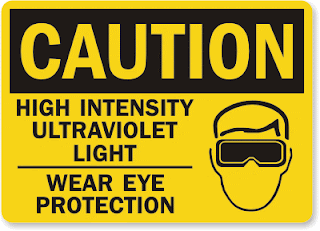How to choose sunglasses.
Look at the
bright, colorful world of summer is just unbearably painful if you without
sunglasses. When choosing their usually we are interested in two questions:
"Is it fit to me?" and "How much?" Advanced customers can
also ask about what kind of protection from ultraviolet radiation has favorite
model. Here, properly speaking, all questions from average consumer to seller
got to come to an end. But, if in choosing sunglasses seriously, but it should
not be limited.
You should always
pay attention to the material from which made the sunglasses, lenses color and
marking. But first things first. Modern optical industry uses to make
sunglasses glass and plastic. For a long time, glass lenses were considered the
best material because it provides good protection from UV light and less
distorted picture. Glass is more resistant to scratches, and its life longer.
But in recent years, high-quality polymeric materials appeared, in no way
inferior to the mineral (glass), and in some ways even superior to them, and
many manufacturers now give preference to plastic. To protect your eyes from
harmful radiation, in the manufacture of the plastic are employing special
chemical compounds, and on a finished lenses are applied special coating. Sunglasses
from such material are obtained light in weight and more practical than glass,
which has one drawback - the fragility and traumatism (and therefore sunglasses
with glass lenses are not recommended to wear for athletes and children).
Plastic also has one drawback - the distortion of objects, but it can be
verified by fitting of sunglasses: with qualitative lens, straight lines should
not be distorted. Of course, sunglasses - a fashion accessory that adds your
charm, mystery and solemnity. Still, their main purpose is different: to weaken
the visible light to a comfortable feeling; further weaken the blue light
range, the most dangerous to the retina and is the cause of photoretinit (burns
the retina by light); to block ultraviolet light, causing a burns to the cornea
and conjunctivitis; retain ability to distinguish between traffic signals.
There are five
categories of lens opacity in sunglasses:
0 - let pass 80-100% of the light (lens
clear or lightly shaded);
1 - let pass 43-80% of the light;
2 - let pass 18-43% of the light;
3 - 8-18% of the light is passed;
4 - let pass 3-8% of the
world (very dark lenses.)
No comments:
Post a Comment